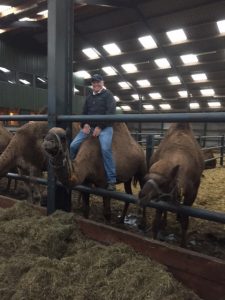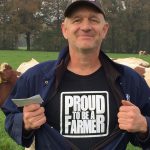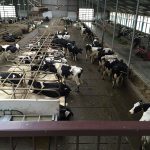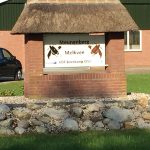Cows and Crops: Keeping Up Appearances
By Rick Kersbergen, Extension Professor, University of Maine Cooperative Extension, richard.kersbergen@maine.edu
No, not a story about a PBS comedy series, but more about dairy farms in the Netherlands and the public perception of those farms.
So, during the last two weeks, I visited more than 25 different dairy farms in the Netherlands, including bio-dynamic, organic, and “conventional” dairy operations. While this is a small percentage of the 19,000 farms in Holland, it has given me a snapshot of how dairy farmers feel about their operations and the image they are trying to portray to the European consumers.
As you can imagine, 19,000 dairy farms in a small country (along with poultry, swine, potato, sugar beet, and of course tulips and ornamental growers) means that farmland is an extremely valuable commodity. Forage production to feed the dairy cows must be maximized in order to produce enough feed, so little land is wasted. Most forage is grass (perennial ryegrass dominates the landscape) and Dutch farmers are only allowed to grow corn silage on 20% of their available land. Nutrient applications (both fertilizer and manure) are highly regulated, with limits on amounts along with mandates on how manure must be spread, with most manure required to be injected into the ground to limit ammonia volatilization.
With no mountains, hills or even many trees, farms in the Netherlands are very visible to the general public traveling by car, train or bicycles through the countryside. Many of the farms feel they are constantly under a microscope, and often get visits from regulators who have received calls from passing motorists. As a result, most barnyards are extremely neat and clean. Tractors are put away in sheds (a lot of forage harvest is done by contractors instead of the dairy farmers), bunker silos are neat, clean with very little if any waste, and farm fields run right up to the edge of the structures to maximize available forage production. One farm family I talked to even plants flowers on top of the bunker silos (they often cover the silos with plastic and then soil instead of tires) to make the farm attractive.
Dairy farmers are trying to change the negative perception that has plagued them for the last few years. Many are very defensive about the criticism they have received about being polluters and industrial farmers. Trying to improve how the public perceives their industry is critically important to help shape new policies and legislation that will impact how they farm in the future. Dutch regulators have instituted a new mandate that dairy farms graze at least some of their animals on farm fields next summer for pastoral beauty and to address animal welfare concerns.
 Trying to turn the tide of negative perception, several of the farms I visited have space above their milking parlors or milking robots (yes, many of the farms use robots to milk their cows) that allow for viewing of their entire barn operation. Some of these rooms include space for meetings, events and bus tours. Not only does this help to improve their image and make their operations even more transparent, it also helps as an additional source of income. One operation I visited was a milking camel farm — yes I said camels (see picture for proof) — that had a restaurant overlooking the barn and milking parlor. They even had a system where your food was delivered by magic carpet.
Trying to turn the tide of negative perception, several of the farms I visited have space above their milking parlors or milking robots (yes, many of the farms use robots to milk their cows) that allow for viewing of their entire barn operation. Some of these rooms include space for meetings, events and bus tours. Not only does this help to improve their image and make their operations even more transparent, it also helps as an additional source of income. One operation I visited was a milking camel farm — yes I said camels (see picture for proof) — that had a restaurant overlooking the barn and milking parlor. They even had a system where your food was delivered by magic carpet.
Dutch dairy farmers are very proud, and it shows by their attitudes and the appearance of their farms.



